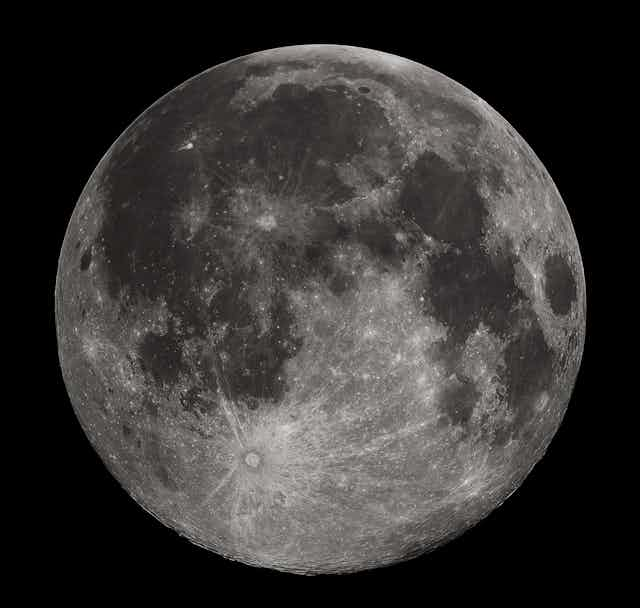Astronomers have found evidence that the axis that the moon spins around shifted billions of years ago due to changes in the moon’s internal structure. The research could help explain the strange distribution of water ice near the lunar poles – the tilt would have caused some of the ice to melt by suddenly exposing it to the sun while shadowing other areas. It could also help us pinpoint craters that have been shadowed for so long that they contain water ice from early in the solar system.
Identifying recent and ancient water ice in specific craters will help scientists map the history of water on the moon. And as the moon likely formed from the Earth colliding with a planet 4.5 billion years ago, it may also help explain how the Earth got its water – a longstanding puzzle.
Coldest spots in the solar system
Scientists have speculated about the presence of water ice in permanently shadowed regions near the poles of the moon for more than half a century. The floors of craters in these areas are among the coldest regions in the solar system, with surface temperatures below -200°C. As no sunlight can reach there, any water molecules falling down there would be trapped. This means that water ice can remain there for billions of years.
However, it was not until the 1990s that results from NASA’s Lunar Prospector mission provided evidence for water ice in these regions. But the results were puzzling. For some reason, not all shadowed regions at the poles seemed to contain water ice. Some such regions away from the lunar poles, however, did – despite the fact that they received a tiny amount of sunlight. This is in stark contrast to Mercury’s poles where water ice has been found exactly where it was predicted (in the areas receiving the least sunlight).

The latest study, published in Nature, presents an elegant solution. The researchers discovered that the moon’s polar ice has been displaced from each pole by the same distance – but in exactly opposite directions. This suggests that the spin axis in the past was tilted differently from what we see today. A change in the tilt would mean that some of the ice deposited long ago has since evaporated by heating from the sun whereas some have not. The old ice that survived this shift effectively “paints” a path along which the axis has moved. The researchers calculated that this pattern could have been produced by the moon’s axis changing by approximately six degrees.
A planet can shift its axis when it experiences a large change in mass distribution. The researchers modelled the way changes in the lunar interior could have affected the moon’s tilt. They found that a dark area known as the Procellarum region was the only feature that could match the change. It contains enough radioactive material to have heated a portion of the lunar mantle from above, causing a density change significant enough to reorient the moon.

The event caused some of the moon’s mantle material to melt and come to the surface to form the visible dark patches (the “Man in the Moon” features) known as mare. Several of the Apollo missions collected such volcanic rocks from these regions, and these were dated to be 3 to 4 billion years old. There are indications that the mantle below the Procellarum region is still warmer today in some locations than in other areas, likely affecting the current orientation.
Implications for water
A major question in planetary science is whether the water on the Earth was already present in the primordial material that formed our planet or whether it was planted there by collisions with bodies such as asteroids, comets and proto-planets.
Recent findings of water in lunar rocks have shown that its isotopic composition is similar to the water on Earth – suggesting the water on the moon and the Earth do have a common origin. In fact, the most likely explanation is that most of the water came from an asteroid or comet. That’s because the violent collision that created the moon would likely have stripped water off Earth that might have been present beforehand.
In the case of the moon, any water coming from an asteroid would have eventually made its way to the shadowed areas to be permanently trapped. On Earth, the record of such processes have been mostly erased because of plate tectonics moving material around. So if we can compare some of this ancient water on the moon with water on asteroids and comets, we may eventually get some evidence that is also relevant to Earth.
But there are many other consequences of this research. One is that it will help us better understand the evolution of the moon’s interior structure.
The findings will also come in handy for governments and private agencies preparing future expeditions to the moon. Identifying and establishing the location and distribution of resources such as water are likely to be the main driver for future exploration, with areas containing water ice being initially targeted. If we’re ever going to settle humans on the moon or use it to launch missions elsewhere we’re going to need water for drinking, breathing, rocket fuel and other things. Getting that water from the moon would be much more convenient – and much cheaper – than bringing it with us from Earth.

